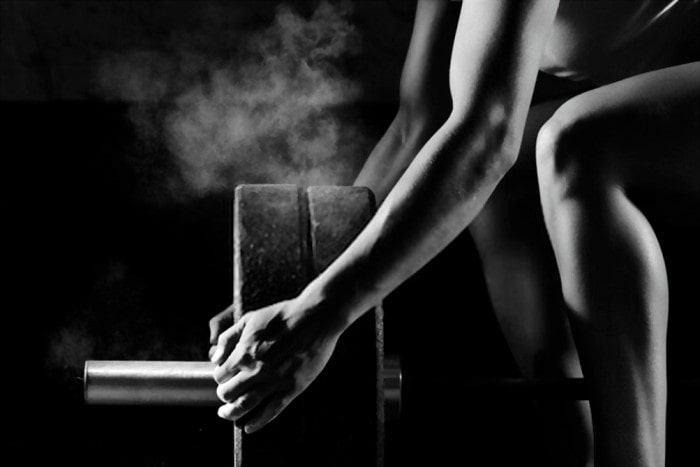
If you’re interested in getting into the gym but are unsure where to start, you’re not alone. Many people are nervous about heading to the gym for the first time. The reasons are numerous: you might be embarrassed of your body or inexperience or you may feel insecure due to the experienced gym-goers around you. Whatever your reason, it’s understandable.
But you can overcome that gym anxiety. With proper planning, you can head into the gym determined and ready to take on your workouts and begin getting stronger with each training session. The best way to prepare is to create a well-defined workout plan.
What does that look like for you? It will have to be personalized, but the following considerations can help you define what will work best for your interests, body and health.
- Ask Yourself What Your Best Body Looks Like- What is it that you want to achieve from working out? Is there a specific body type you’re looking for or are you just looking to get healthier? Interested in running a faster 5K or do you just want to strengthen your core due to sitting in a chair all day at work?
These initial questions must be answered before you move forward. While you can get into the gym and begin doing various types of workouts, you should head in with a plan in mind. Getting a varied workout is still good for your overall health, but you should consider setting aside time to know what you want for your future self.
2. Know What Exercises Will Get You Where You Want to Be– Once you’ve defined what it is you want to achieve by going to the gym, you’ll want to find which workouts will help you reach your goals. It can be difficult to know which workout is right for you. Consider consulting an online guide, forum, or friend to find which workouts target specific body parts.
3. Find Weights That Work for You– So you’ve found your workouts and have begun planning, but how much weight should you start with? The best rule of thumb is to start low and climb. By starting low, you’re lowering your chances of injury. Furthermore, it will help you find the right weight that works for you. For instance, if the bench press is a part of your training, consider starting with just the bar. If you’re comfortable there, slowly add weight in five pound increments until you’ve found a weight that is slightly difficult. That slight difficulty is a sign that you’re pushing your muscles and putting in work.
4. Incorporate Pre-Workout Supplements– Theadded vitamins in pre-workout supplements, such as B12 and B3 (niacin) can help your body recover faster, all while maintaining gains made during training. Furthermore, added stimulants—such as caffeine and ephedra—will give you the pre-workout energy you need, leading to workout sessions where you’ll be able to go faster, further, and harder with each movement.

5. Take Training Days and Rest Days– Part of creating a workout plan requires understanding how much you’ll need to work out. However, you’ll also need to consider how much rest your body will require.
People first getting into weight training think of jumping right into the deep end. While you might expect the most results to come from training seven days a week, you’re bound to push yourself into burnout. Instead, it’s important to leave time for rest both on days your training and throughout the week.
A general rule of thumb while training is to take two minutes of rest in between sets. When planning your training week, consider starting small and ramping up from there—e.g. start training just two days a week, increase to three after a few weeks, then after a month consider adding in some new lifts.
6. Keep Track of Your Progress– One of the best things you can do while regularly working out is to keep a journal. Don’t be wary—this doesn’t mean you’ll be writing a journal entry every day. However, it does mean you keep track of what you did during each workout, how many reps and sets you did with certain amounts of weight, and more. This is an effective way of both tracking growth and remembering your max weight for future weight training sessions.

7. Get the Most Out of Your Workout– A protein shake after workouts can provide results by helping you absorb the benefits of training sessions thanks to added supplements and compounds. While it’s not imperative to cram all of your daily protein in right after a workout, it’s a smart idea to consume a significant amount then, as your body benefits from having protein consumption spaced throughout the day. Most every post-workout protein shake should have over 20 grams of protein and should be made from simple protein sources, which include egg white protein, 100 percent whey protein, pea protein isolate, and more.
8. Get The Help of a Professional– If you’ve hit a point in starting your workout journey and are unsure of where to go next, you can always consider reaching out to a professional. A certified trainer or nutritionist may be the perfect partner to identify modifications that can be made to make the most out of your workouts. These can include setting a training schedule, whether it be a daily or weekly plan, and cleaning up your diet. Such professional, confident direction can help you perform better with each workout.
Every Workout Plan is Unique
Creating the perfect workout plan is no small feat, but the you’re first consideration when creating one is to make it perfect for you. Everyone’s fitness needs are different; no one person trains the same as another. To make the most out of your workouts, set aside time beforehand. You can benefit from thinking ahead prior to working out, whether by utilizing pre-workout supplements or factoring in rest time.
